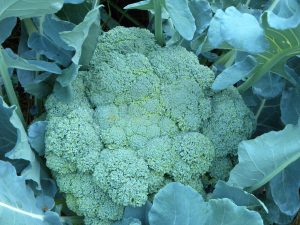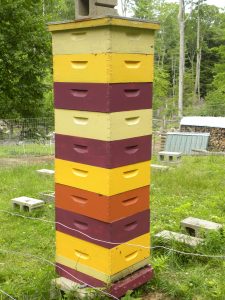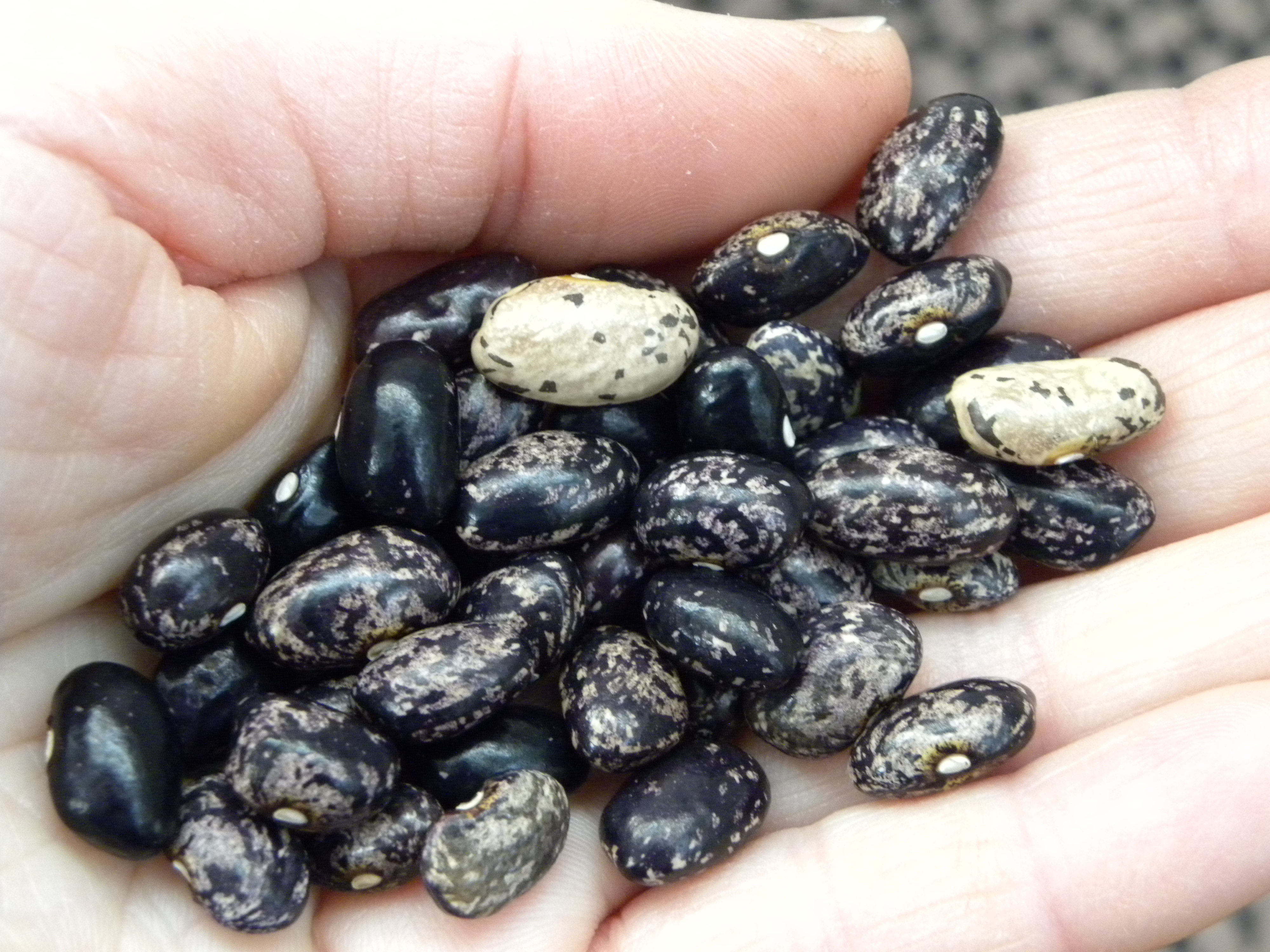This has been a good week for reflection and planning. We’ve gotten out the new calendars, are noticing the growing light, and we’ve been driven inside by storms and bitter cold!
First, a look back to consider accomplishments on the homestead in 2017. I tend to push forward and move on to what’s next, but I know it’s good for me to take time to learn from successes and problems we had, and to allow for a sense of satisfaction and gratitude for what worked. I will make better, smarter plans coming from this place.

One of my bean plants produced this seed. I have no idea what it is – anyone know?
In the plant realm: we expanded our growing areas using swales, sheet mulching and hugelkultur. We planted 5 new trees, 10 new berry bushes, many new perennials, and a big garden of annuals. I tried some new crops: various heritage dried beans, a heritage variety popcorn, and 3 new types of potatoes. My records show that the Bora Valley and Nicola potatoes were my biggest producers this year. Yay for record keeping!

Beautiful Bug-free Broccoli
We had very few insect pest problems this year, other than some early squash vine borers. I had almost no colorado potato beetles, and the cabbage worms didn’t become an issue until much later in the season than usual. I planted both of those crops late this year possibly missing the first reproductive cycle for the pests. That was purposeful for the beetles, but accidental for the cabbage worms.
In our animal endeavors: We raised new chickens using 2 broody hens and 1 incubator hatch. None of our ducks succeeded in brooding, so we just had a few new ones from the incubator. We kept milking the goats, although the previous

Steve Building a Hay Shelter
fall’s breeding failure meant less of it. I built my apiary back up after a lot of winter hive losses. I did have one hive that overwintered well and had an amazing season. Steve built a new shelter for hay and animals which I anticipate will help us get much more organized thus saving us quite a bit of work in the future.
This year I also taught classes in beekeeping, soil building, animal care and permaculture. I accepted the 2017 NOFA-NH Gardener of the Year Award. I wrote new blog posts to share here on our website.

Successful Bee Hive – Hope to Have More Like These in 2018!
In the new year, I look forward to more plants and animals and continued good work with the earth. Our seed, potato and tree catalogues are spread out to choose next season’s varieties. We did save more of our own seed this year, but not for all crops. We’ve identified where we want to expand to next and even got that started in the long, warm fall we had. I have learned not to order trees or bushes for the areas we didn’t finish yet! We have some unhappy plants overgrowing their nursery beds from the years I was too optimistic about how fast the work would go.
For my blogging this year, I am going to try something new. Often I am asked: “what do you do at your farm?” and “how much do you grow?” I never have great answers. Each season and every day is so different, in terms of what we do and what we harvest. In 2018 I am going to try to give a monthly update, summarizing what we did and what we harvested in the previous month. It won’t be a quick answer to those questions, but it should be informative.
I hope you’ll follow us and join me in charting the next year as we experience it!



Any advice for the Squash vine borer? I’ve taken the last two years off from any squash because of such bad luck wth them. I’ve even had the “privilege” of watching a moth come around and lay its eggs.
Great question!
First off, whenever having any problems in the garden I see if I can improve the soil. Plants growing in healthy soil are resistant to problems of all kinds. Definitely start there.
But, then, there are larger factors that can stress out plants – like a drought, or an imbalanced population of predators/pests in your area – even in great soil. When you get there, I think what you just did is a great strategy – take a year off to cut down the population. Just like oaks alternating heavy and light acorn years. It might not work if you are in a community garden where everyone else is growing them. We do have neighbors who keep growing squash every year so there will still be a population in waiting. But, it still has worked well for us, even when done kind of accidentally. Two years ago we grew tons of squash – a regular supply of summer and 150 winter – and tons of egg-laying options for the bugs, right?! This year, most of the plants were killed off pretty early by the borers. So, we got less squash but the bugs got less habitat. We’ve had this pattern repeat a few times now, so I am starting to accept it as a normal cycle for us.
There are other options out there that I’ve read about but have never tried. If I decide I need another strategy I would next try row cover in the spring to see if I could miss their egg-laying time.
Oh – this year I do also plan to try some more resistant varieties. I’m reading my Fedco catalogue carefully to find them!
Congratulations on a successful season.
I kept a record of how much I produced in one of my raised beds at Wagon Hill for the months of June and July one year. I weighed everything I harvested. I have found that information to be very useful. It was included in the Agricultural Commission’s Master Plan Chapter, for example, as validation for continued support of the Community Garden and for our initiatives to encourage home food production. Quantitative data gets people’s attention.
That’s great to hear! Some things I’ve been really good about documenting but others escape me. The crops I harvest/put away all at once are the easy ones for me – garlic, potatoes, dry beans. The ongoing givers like kale, snap beans, lettuce, tomatoes I need a better system for. That’s my task for this year!